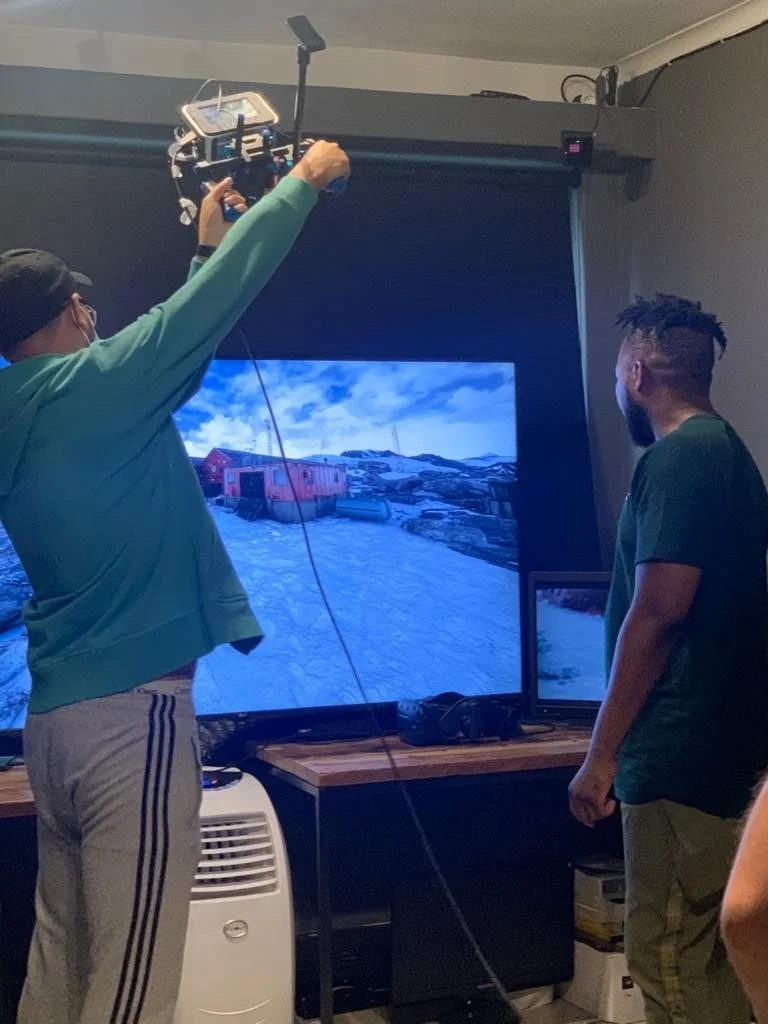Building South Africa’s First Volume
Last month, we accomplished something that had been sitting on our minds since The Mandalorian made waves in the industry: we built our own working version of The Volume.
At its core, the concept is simple but ambitious: a LED wall powered by Unreal Engine, where real-time environments wrap around actors and respond instantly to the camera and lighting. The result? Worlds that feel real, captured in-camera.
The project started as an experiment led by Keno Naidoo. With a tight crew of three artists, we began designing and testing how far we could push Unreal Engine as a production tool. We weren’t working with Hollywood resources—we were working with what we had. That constraint made us sharper, not smaller.
The Process
Pre-production hustle: Keno Naidoo (left) & Tebogo 'Tebza' Malope (right)
Environments: Our artists built detailed digital scenes inside Unreal, optimized not for renders weeks later, but for performance live on set.
Camera Tracking: Using accessible tools and clever coding, we achieved seamless parallax, so backgrounds shifted naturally as the camera moved.
Lighting Integration: The LED walls weren’t just backdrops—they became dynamic light sources, washing actors and props in the same color, tone, and reflections as the world around them.
Iterative Testing: Every week brought small breakthroughs—an unexpected sync, a glitch patched, a shot that suddenly looked like it had been captured on location.
There’s a moment every experimenter knows: the instant when the work stops being theory and becomes real. For us, it happened when the first test shot played back.
The background wasn’t a flat projection. It moved. It bent with the lens. It wrapped the subject in light that felt like it was coming from another world. For a heartbeat, everyone in the room forgot it was an LED wall.
The Volume had come to life.
We didn’t set out to replicate Hollywood. We set out to see what we could do with curiosity, creativity, and code. Last month, we answered that question.
And in that moment—standing in front of a curved wall of light, watching Unreal environments breathe on camera—we proved that the future doesn’t have to be imported. Sometimes, it can be built right here.



